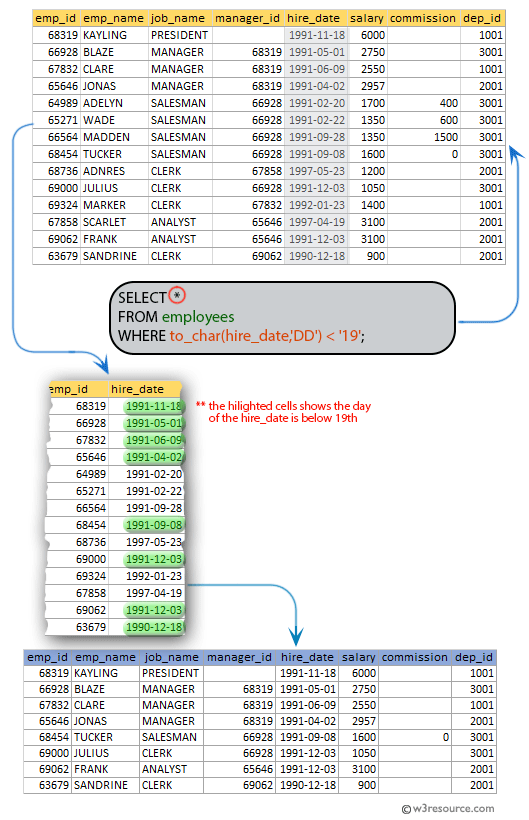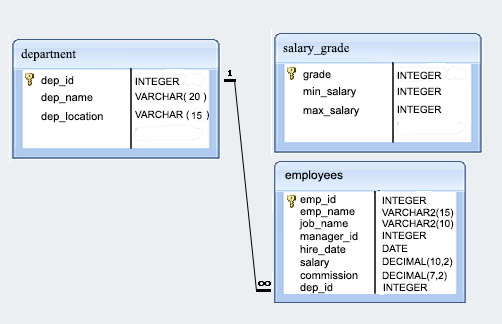SQL Exercise: Employees joined in company before 19th of the month
[An editor is available at the bottom of the page to write and execute the scripts.]
34. From the following table, write a SQL query to find out which employees joined the company before the 19th of the month. Return complete information about the employees.
Sample table: employees
Pictorial Presentation:
Sample Solution:
SELECT *
FROM employees
WHERE to_char(hire_date,'DD') < '19';
Sample Output:
emp_id | emp_name | job_name | manager_id | hire_date | salary | commission | dep_id --------+----------+-----------+------------+------------+---------+------------+-------- 68319 | KAYLING | PRESIDENT | | 1991-11-18 | 6000.00 | | 1001 66928 | BLAZE | MANAGER | 68319 | 1991-05-01 | 2750.00 | | 3001 67832 | CLARE | MANAGER | 68319 | 1991-06-09 | 2550.00 | | 1001 65646 | JONAS | MANAGER | 68319 | 1991-04-02 | 2957.00 | | 2001 69062 | FRANK | ANALYST | 65646 | 1991-12-03 | 3100.00 | | 2001 63679 | SANDRINE | CLERK | 69062 | 1990-12-18 | 900.00 | | 2001 68454 | TUCKER | SALESMAN | 66928 | 1991-09-08 | 1600.00 | 0.00 | 3001 69000 | JULIUS | CLERK | 66928 | 1991-12-03 | 1050.00 | | 3001 (8 rows)
Explanation:
The said query in SQL that selects all columns from the table 'employees' where the hire_date value, after being converted to a character string with the format mask 'DD', is less than '19'.
The to_char function converts the "hire_date" column to a character string with the format mask 'DD', which means that only the day of the month will be displayed.
The WHERE clause includes only those rows for the day of the hire_date value is less than the 19th day of the month.
Go to:
PREV : List the employees who joined in the month of APRIL.
NEXT : Employees who are SALESMAN and have an experience.
Practice Online
Sample Database: employees
Have another way to solve this solution? Contribute your code (and comments) through Disqus.
What is the difficulty level of this exercise?
Test your Programming skills with w3resource's quiz.


